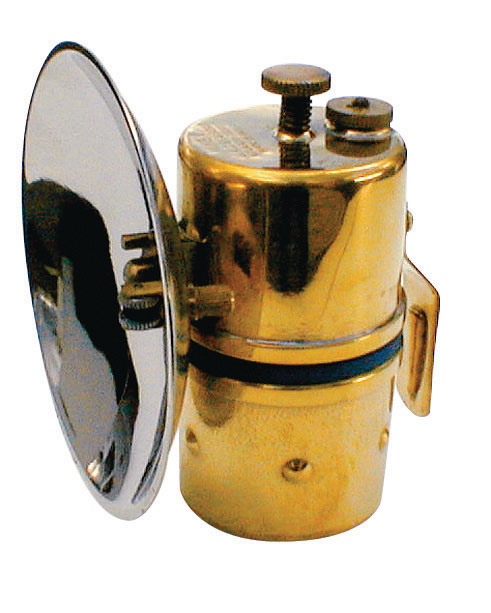
Reactions and Compounds of Carbon
 المؤلف:
LibreTexts Project
المؤلف:
LibreTexts Project
 المصدر:
................
المصدر:
................
 الجزء والصفحة:
.................
الجزء والصفحة:
.................
 7-6-2020
7-6-2020
 1840
1840
Reactions and Compounds of Carbon
Carbon is the building block of all organic compounds, including biomolecules, fuels, pharmaceuticals, and plastics, whereas inorganic compounds of carbon include metal carbonates, which are found in substances as diverse as fertilizers and antacid tablets, halides, oxides, carbides, and carboranes. Like boron in group 13, the chemistry of carbon differs sufficiently from that of its heavier congeners to merit a separate discussion.
The structures of the allotropes of carbon—diamond, graphite, fullerenes, and nanotubes—are distinct, but they all contain simple electron-pair bonds. Although it was originally believed that fullerenes were a new form of carbon that could be prepared only in the laboratory, fullerenes have been found in certain types of meteorites. Another possible allotrope of carbon has also been detected in impact fragments of a carbon-rich meteorite; it appears to consist of long chains of carbon atoms linked by alternating single and triple bonds, (–C≡C–C≡C–)n. Carbon nanotubes (“buckytubes”) are being studied as potential building blocks for ultramicroscale detectors and molecular computers and as tethers for space stations. They are currently used in electronic devices, such as the electrically conducting tips of miniature electron guns for flat-panel displays in portable computers.
Although all the carbon tetrahalides (CX4) are known, they are generally not obtained by the direct reaction of carbon with the elemental halogens (X2) but by indirect methods such as the following reaction, where X is Cl or Br:

The carbon tetrahalides all have the tetrahedral geometry predicted by the valence-shell electron-pair repulsion (VSEPR) model, as shown for CCl4 and CI4. Their stability decreases rapidly as the halogen increases in size because of poor orbital overlap and increased crowding. Because the C–F bond is about 25% stronger than a C–H bond, fluorocarbons are thermally and chemically more stable than the corresponding hydrocarbons, while having a similar hydrophobic character. A polymer of tetrafluoroethylene (F2C=CF2), analogous to polyethylene, is the nonstick Teflon lining found on many cooking pans, and similar compounds are used to make fabrics stain resistant (such as Scotch-Gard) or waterproof but breathable (such as Gore-Tex).
The stability of the carbon tetrahalides decreases with increasing size of the halogen due to increasingly poor orbital overlap and crowding.
Carbon reacts with oxygen to form either CO or CO2, depending on the stoichiometry. Carbon monoxide is a colorless, odorless, and poisonous gas that reacts with the iron in hemoglobin to form an Fe–CO unit, which prevents hemoglobin from binding, transporting, and releasing oxygen in the blood (see Figure 23.26). In the laboratory, carbon monoxide can be prepared on a small scale by dehydrating formic acid with concentrated sulfuric acid:

Carbon monoxide also reacts with the halogens to form the oxohalides (COX2). Probably the best known of these is phosgene (Cl2C=O), which is highly poisonous and was used as a chemical weapon during World War I:

Despite its toxicity, phosgene is an important industrial chemical that is prepared on a large scale, primarily in the manufacture of polyurethanes.
Carbon dioxide can be prepared on a small scale by reacting almost any metal carbonate or bicarbonate salt with a strong acid. As is typical of a nonmetal oxide, CO2 reacts with water to form acidic solutions containing carbonic acid (H2CO3). In contrast to its reactions with oxygen, reacting carbon with sulfur at high temperatures produces only carbon disulfide (CS2):

The selenium analog CSe2 is also known. Both have the linear structure predicted by the VSEPR model, and both are vile smelling (and in the case of CSe2, highly toxic), volatile liquids. The sulfur and selenium analogues of carbon monoxide, CS and CSe, are unstable because the C≡Y bonds (Y is S or Se) are much weaker than the C≡O bond due to poorer π orbital overlap.
π bonds between carbon and the heavier chalcogenides are weak due to poor orbital overlap.
Binary compounds of carbon with less electronegative elements are called carbides. The chemical and physical properties of carbides depend strongly on the identity of the second element, resulting in three general classes: ionic carbides, interstitial carbides, and covalent carbides. The reaction of carbon at high temperatures with electropositive metals such as those of groups 1 and 2 and aluminum produces ionic carbides, which contain discrete metal cations and carbon anions. The identity of the anions depends on the size of the second element. For example, smaller elements such as beryllium and aluminum give methides such as Be2C and Al4C3, which formally contain the C4− ion derived from methane (CH4) by losing all four H atoms as protons. In contrast, larger metals such as sodium and calcium give carbides with stoichiometries of Na2C2 and CaC2. Because these carbides contain the C4− ion, which is derived from acetylene (HC≡CH) by losing both H atoms as protons, they are more properly called acetylides. Reacting ionic carbides with dilute aqueous acid results in protonation of the anions to give the parent hydrocarbons: CH4 or C2H2. For many years, miners’ lamps used the reaction of calcium carbide with water to produce a steady supply of acetylene, which was ignited to provide a portable lantern.

 الاكثر قراءة في مواضيع عامة في الكيمياء اللاعضوية
الاكثر قراءة في مواضيع عامة في الكيمياء اللاعضوية
 اخر الاخبار
اخر الاخبار
اخبار العتبة العباسية المقدسة


